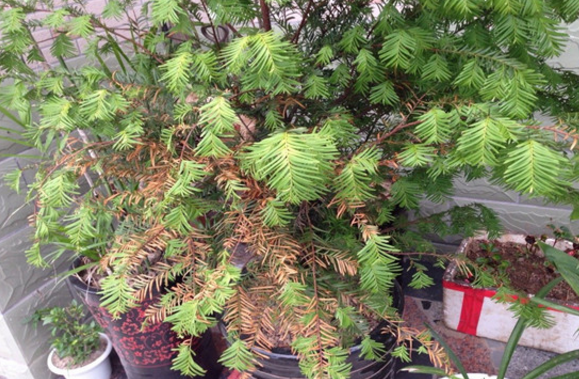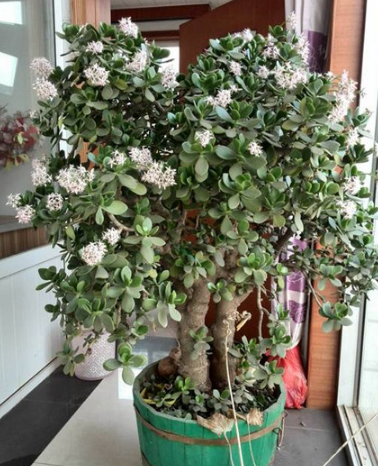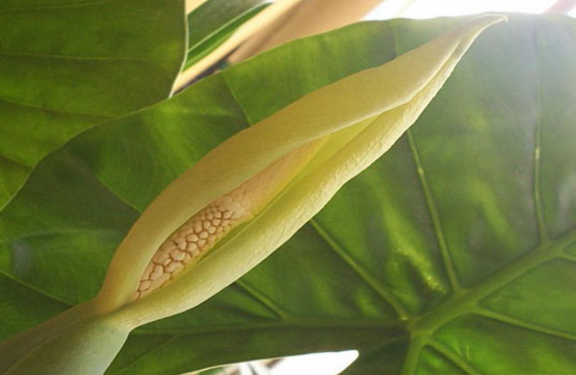The cause of yellowing of yew leaves and its solution where is the yew suitable for display
Every year at Christmas, we often use yew to make a Christmas wreath, which is a common plant in daily life, and it is also often used as a landscape tree in the garden, so it is also common for yew to get sick. The most important thing is that people who are going to breed know how to maintain it, and that is excellent.

Causes of yellowing of Taxus leaves and its solution
1. Abrupt changes in the growth environment of Taxus mairei
The sudden change of the growth environment will lead to the yew can not adapt at once, resulting in the poor growth state of the plant and the yellowing of the leaves.
Solution:
In the process of transplanting yew, it is necessary to create an environment similar to the original environment, and then slowly adjust. When there is a sudden change in the growth environment, too, slowly adjust.
2. Too much or too little watering of the yew
In the process of farming, too much watering will lead to dim young leaves of the yew and wilting of the top of the new shoots. Long-term lack of water will lead to dry leaves, lack of moisture, yellowing phenomenon.
Solution:
When the situation is not very serious, it is necessary to control the amount of watering, gently pick the soil on the surface of the basin soil with a shovel, let the soil breathe, and move to a place with dew every night. When the situation is serious, change the soil directly. In the process of watering, it should be based on the principle that it is not dry or watered, and if it is watered thoroughly. It should be noted that the surface of the basin soil is dry but the middle soil is not necessarily short of water. Some anti-rotting agents can be used when watering.
3. Taxus exposure
In the high temperature weather in summer, exposing the yew to the sun will cause the transpiration of the plant to be too strong, and the speed of root water replenishment can not keep up, resulting in the lack of water on the leaf surface of the plant and wilting and yellowing.
Solution:
Put the yew indoors, spray water on the leaves, and wait for a period of time to recover.
4. Taxus mairei air drying
Taxus is not suitable to be placed in the air outlet of the air conditioner, which will lead to the increase of water evaporation on the leaf surface of the yew, resulting in rapid dehydration of the branches and leaves of the yew, curling and withering of the leaf surface, wilting and drooping.
Solution:
If the air conditioner is turned on indoors, spray water on the leaves of the yew, maintain the humidity of the leaves, and put a basin of water indoors.
5. The yew is lack of sunshine.
There is not enough light. The photosynthesis is weak and the photosynthate can not be supplied back to the root system. The lack of nutrients in the root system leads to the yellowing of the leaf surface and the loss of leaves.
Solution:
Put it on the balcony or outdoors in the morning and evening and do it every few days.
6. The temperature of the yew is too high or too low.
The high temperature of the environment where the yew is located will lead to the lack of water on the leaf surface and the phenomenon of scorched yellow. Too low temperature will affect the internal transport of nutrients in plants, resulting in insufficient nutrition and yellowing of leaves.
Solution:
When the temperature is too high, spray the leaves of the yew to keep it moist. When the outdoor weather changes greatly, we should pay attention to the yew's protection against cold and warmth.
7. Taxus mairei fertilized too much or too little
The newly bought yew can not spray fertilizer on the leaves of the new buds, which will cause the young leaves or buds of the yew to shrink and curl. Long-term lack of fertilizer will lead to yellowing of yew leaves and slow growth.
Solution:
When fertilizing too much, it is necessary to properly dilute the fertilizer and water, or change the basin soil. When there is a long-term lack of fertilizer, it is necessary to apply nitrogen, phosphorus and potassium.
8. Taxus is affected by diseases and insect pests
Diseases and insect pests will cause brown spots on the needles and branchlets in the lower part of the seedling, which will gradually expand to dark brown and eventually lead to the death of the leaves.
Solution:
In the emergence of leaf blight and red blight, should be treated with Bordeaux solution or bacilli control.
Where is the yew suitable for display?
1. The placement environment of Taxus mairei
When cultivating yew, it is very important to put it in a suitable position. First of all, it depends on what environment the yew is suitable for breeding.
Taxus likes to be dry, and the breeding environment should not be too humid. Generally, when breeding indoors, it should be placed in a place with good sunshine and good ventilation. But be careful not to put it in a place that is too hidden, which will lead to the overgrowth of the branches and leaves of the yew. Generally put the yew on the balcony or the windowsill, but in the summer should pay attention to timely shading, lest the strong light cause its leaves to be burned.
In addition, it is best not to put yew next to the TV set, one is because the moisture of the yew will have a bad effect on the TV, and the other is because the TV will emit some radiation, which will destroy the yew cells and wither and die.
2. The position of the yew.
In terms of fengshui, the yew is more suitable to be placed in the southeast. Putting the yew here means having a family and good health. From the point of view of the five elements, the yew is a synthesis of the characteristics of the five elements, it contains five colors. The root bark of the yew is purplish red, representing fire, the leaves are green, representing wood, the stem is yellowish brown, representing soil, and the seed is skin red, core black, representative gold. From these aspects, if the home is more prosperous or lack of moisture, the yew can be placed at the entrance of the hall. If there are too many yellow lines in your family or your anger is too weak, you can put the yew on the shadow wall or several cases. If there are too many cameras at home or the wood is too weak, you can put the yew in the corner and beside the bed. If the home is too black or rustic, you can put the yew in the bedroom or at the door.
Causes of yellowing of Taxus leaves and its solution
Mutation of growth environment of Taxus chinensis var. mairei
The sudden change of the growth environment will lead to the yew can not adapt at once, resulting in the poor growth state of the plant and the yellowing of the leaves.
Solution method
In the process of transplanting yew, it is necessary to create an environment similar to the original environment, and then slowly adjust. When there is a sudden change in the growth environment, too, slowly adjust.
Too much or too little watering of the yew
In the process of farming, too much watering will lead to dim young leaves of the yew and wilting of the top of the new shoots. Long-term lack of water will lead to dry leaves, lack of moisture, yellowing phenomenon.
Solution method
When the situation is not very serious, it is necessary to control the amount of watering, gently pick the soil on the surface of the basin soil with a shovel, let the soil breathe, and move to a place with dew every night. When the situation is serious, change the soil directly. In the process of watering, it should be based on the principle that it is not dry or watered, and if it is watered thoroughly. It should be noted that the surface of the basin soil is dry but the middle soil is not necessarily short of water. Some anti-rotting agents can be used when watering.
Taxus exposure
In the high temperature weather in summer, exposing the yew to the sun will cause the transpiration of the plant to be too strong, and the speed of root water replenishment can not keep up, resulting in the lack of water on the leaf surface of the plant and wilting and yellowing.
Solution method
Put the yew indoors, spray water on the leaves, and wait for a period of time to recover.
Taxus chinensis air drying
Taxus is not suitable to be placed in the air outlet of the air conditioner, which will lead to the increase of water evaporation on the leaf surface of the yew, resulting in rapid dehydration of the branches and leaves of the yew, curling and withering of the leaf surface, wilting and drooping.
Solution method
If the air conditioner is turned on indoors, spray water on the leaves of the yew, maintain the humidity of the leaves, and put a basin of water indoors.
The yew has not enough sunshine.
There is not enough light. The photosynthesis is weak and the photosynthate can not be supplied back to the root system. The lack of nutrients in the root system leads to the yellowing of the leaf surface and the loss of leaves.
Solution method
Put it on the balcony or outdoors in the morning and evening and do it every few days.
The temperature of the yew is too high or too low.
The high temperature of the environment where the yew is located will lead to the lack of water on the leaf surface and the phenomenon of scorched yellow. Too low temperature will affect the internal transport of nutrients in plants, resulting in insufficient nutrition and yellowing of leaves.
Solution method
When the temperature is too high, spray the leaves of the yew to keep it moist. When the outdoor weather changes greatly, we should pay attention to the yew's protection against cold and warmth.
Taxus mairei fertilized too much or too little
The newly bought yew can not spray fertilizer on the leaves of the new buds, which will cause the young leaves or buds of the yew to shrink and curl. Long-term lack of fertilizer will lead to yellowing of yew leaves and slow growth.
Solution method
When fertilizing too much, it is necessary to properly dilute the fertilizer and water, or change the basin soil. When there is a long-term lack of fertilizer, it is necessary to apply nitrogen, phosphorus and potassium.
Taxus is affected by diseases and insect pests
Diseases and insect pests will cause brown spots on the needles and branchlets in the lower part of the seedling, which will gradually expand to dark brown and eventually lead to the death of the leaves.
Solution method
In the emergence of leaf blight and red blight, should be treated with Bordeaux solution or bacilli control.
Yew leaves yellowing reason what to do about yew leaves drying up
Taxus is a kind of ornamental flower plant that many people like to cultivate at home, but in the process of breeding, it often shows symptoms of yellowing or withering leaves, what should be done at this time? In fact, there are many reasons for yellowing and drying up of yew leaves, so we should deal with the disease. Here I will specifically talk about the causes of yew leaves yellowing and what should be done about yew leaves drying up.
Yew leaves yellowing reason what to do about yew leaves drying up
1. Lack of light causes yellowing of leaves.
When the yew is in culture, if the light is insufficient, it will cause the leaves to yellowing or dry. Although the shade tolerance of this plant is very strong, it also needs the right amount of sunlight when growing. If the light is not enough, photosynthesis cannot be carried out. It will also make the leaves yellowing and withered. At this time, as long as the yew is moved to the sun sooner or later, the yellowing and drying of these leaves can be avoided.
2. Yellowing of leaves caused by water imbalance
Water imbalance is also an important cause of yellowing or drying up of yew leaves. Therefore, we should pay special attention to watering the yew at ordinary times, watering it thoroughly, but not too much, and adding some bacterial yarn or ferrous sulfate when watering, it is also of great benefit to prevent the leaves from yellowing and drying up.
3. Large potted seedlings can also cause yellowing of leaves.
When we usually cultivate yew, we should change the basin in time. If there is a large seedling in the basin, it will also make the leaves of the yew yellow or dry, because when the seedling is big and small, it is impossible to provide the necessary nutrients for the yew at all. and its root system will also extend to the edge of the flowerpot, the root tip will die, after the occurrence of this situation, the leaves of the yew will turn yellow or directly dry off.
- Prev

A plant that won't die without watering it for a month.
Most of the time, it's not that you can't raise it well, but that the plants you choose are not suitable. For example, if you are too busy with your work every day, raising a pot of copper grass must be dry to death, and raising a pot of succulent plants at home will definitely grow too much. How to choose a pot of flowers that suits you is a discipline.
- Next

The reasons for the yellowing of Guanyin leaves in dripping water and what are the advantages of planting them
The appreciation value of Dishui Guanyin lies in its luxuriant and verdant leaves. When watering or air humidity is high, water droplets will drop from the edge of the leaves, which is very agreeable. Let's learn more about Dishui Guanyin.
Related
- Fuxing push coffee new agricultural production and marketing class: lack of small-scale processing plants
- Jujube rice field leisure farm deep ploughing Yilan for five years to create a space for organic food and play
- Nongyu Farm-A trial of organic papaya for brave women with advanced technology
- Four points for attention in the prevention and control of diseases and insect pests of edible fungi
- How to add nutrient solution to Edible Fungi
- Is there any good way to control edible fungus mites?
- Open Inoculation Technology of Edible Fungi
- Is there any clever way to use fertilizer for edible fungus in winter?
- What agents are used to kill the pathogens of edible fungi in the mushroom shed?
- Rapid drying of Edible Fungi

